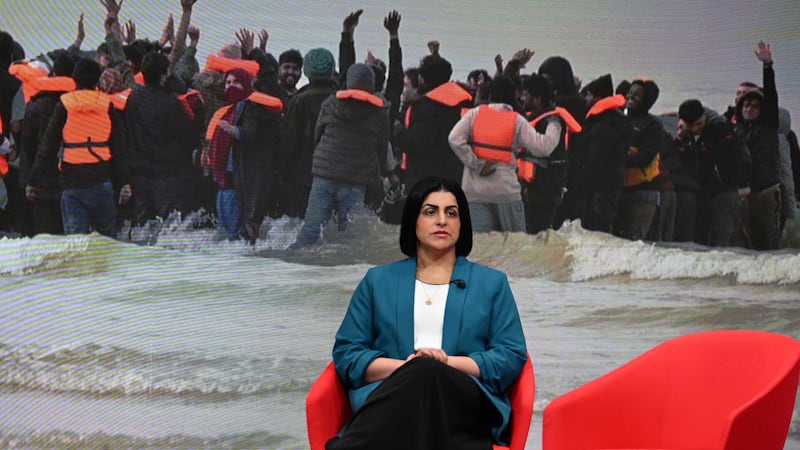In the sharp chill of an autumnal dawn, the 70-year long connection between Queen Elizabeth II and her public ends with the closure of heavy doors of Westminster Hall at 6.30am on Monday.
Over the course of a unique morning in London, the official end of the longest monarchical reign in British history, a spectacular extravaganza of royal funereal pageantry and the most intense security operation since the second World War will be compressed into hours which have been minutely plotted for years in advance. The details of Operation London Bridge were approved and signed off by the queen, long before her death (in Balmoral 11 days ago) triggered its implementation.
As governmental and ceremonial heads of state from across the globe arrived in London over the weekend, a senior British army officer, chief of the general staff Sir Patrick Sanders, described the military aspect of the service as “the largest ceremonial event of this scale” undertaken “in generations”.
All weekend, the heavy flow of mourners arriving from across Britain and elsewhere to pay their respects continued, with the queue still seven miles long as the night began to fall over the city. Hotels in the city were at capacity over the weekend and staff at London underground stations located near the procession route were preparing to host an unprecedented rush of people on their way to witness the funeral procession and funeral.
RM Block
The opening details of the queen’s procession mirror those put in place for Queen Victoria 121 years ago. Her casket will be placed on the state gun carriage, also used on that occasion and hand-pulled by rope. However, the queen will become the first monarch to have a funeral service at Westminster Abbey since King George II in 1760. Her casket will be carried by soldiers through the west gate of the abbey eight minutes before the 11am service, which will begin with a rendition of the last post.
King Charles III, the new monarch, is expected to lead the family mourners following immediately behind the casket. US president Joe Biden and French president Emmanuel Macron will be prominent among the cast of world leaders seated in the south transept of the abbey some two hours before the service begins. British prime minister Liz Truss is among those scheduled to give readings during the service.
The day will mark the biggest security operation in the city since the second World War. The funeral service will be broadcast live on television around the world and in cinemas and big screens throughout the United Kingdom. Ireland will be represented by President Michael D Higgins and Taoiseach Micheál Martin, who will be accompanied by their respective wives, Sabina and Mary.
Despite the vast numbers of people on the streets, it is anticipated that the procession and service will take place in a hushed atmosphere. After the usual 9am bell strike of the Big Ben clock at Westminster, a leather muffle will be placed on the bell hammer to mute its strikes for the remainder of the day.
A reception at Church House, beside Westminster Abbey, hosted by James Cleverly, the foreign secretary, has been arranged for the heads of state present after the morning’s service. Ms Truss and the small number of leaders of countries over which the monarch is still head of state will travel to Windsor with the royal funeral cortege.
The queen’s casket will be taken on a last London procession from the abbey to Wellington Arch, at Hyde Park Corner. From there, she will be brought by state hearse to Windsor and laid to rest, following an afternoon service, in the royal vault at St George’s chapel, which also is the final resting place of her husband Philip, the duke of Edinburgh, her parents, and her sister, Margaret.
The bank holiday announced to coincide with the funeral will mark the end of a uniquely British occasion when political fractures, the portents of a savage economic winter and debates about the future make-up of the monarchy were set aside to mourn the woman who has served as monarch through the lifespan of most citizens living in the UK.




















